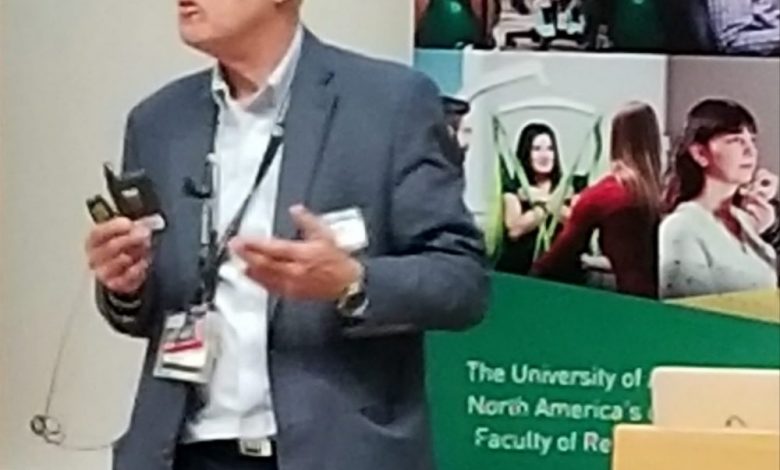
FutureCite:
Martin, you spoke at the VR after Dark Symposium about two different streams of VR – From Bricolage or “do it yourself”, to “researcher studies in the Robotics Lab”. Can provide further insights into both streams of VR and healthcare?
Dr. Martin Ferguson-Pell:
Based on the work we have been doing in developing VR learning objects in health care it has become apparent that as we go forward over the next few years two streams of development are likely to occur.
The first I call Bricolage VR. Bricolage is a French word that loosely translated means “do it yourself”. A more nuanced translation also implies “do it yourself with what is available” or “constructed from a diverse range of things”. I think this is aligned with new development platforms such as Amazon’s Sumerian and EON’s VR Creator which are intended to enable non-programmers to link together a diverse collection of library objects to create a VR experience.
The Bricolage VR stream is intended therefore to evolve into the immersive equivalent of Powerpoint, where the instructor creates their own VR learning objects. These, for the foreseeable future, are likely to be less immersive than state-of-the-art simulations and will be limited by the processing capabilities of mobile devices. They are likely to be used for very low cost VR experiences for classroom and personal use.
FutureCite:
So will the second type of stream be more suited for immersive virtual reality simulations?
Dr. Martin Ferguson-Pell:
The second stream will create remarkable immersive, extended reality experiences that integrate sophisticated graphic design, animation and artificial intelligence to produce highly interactive experiences where the user is able to move spatially in the simulation.
In due course these systems will add authentic audio, haptics and other sensory experiences so that the user believes they are present. This will require much more processing power than mobile devices can currently provide, high end graphic designer and animation expertise, and specialist integration of AI.
The simulation stream is exciting because it will draw in many disciplines in the quest to create a sense of reality, drama, or compelling extended reality. Add the ability to engage multiple users, as we are beginning to see with EON Virtual Trainer, and a whole new dimension to VR opens up.
FutureCite:
Martin, so in short, there are opportunities to engage different levels of users, and to create new dimensions of complexity using VR in collaboration with other disciplines. We look forward to exploring VR technology applications with the inter-disciplinary teams in the Alberta Robotics Lab in collaboration with rehabilitation medicine.
About Dr. Martin Ferguson-Pell
Dr. Ferguson-Pell is a biomedical engineer and credentialed clinical scientist. He has dedicated his academic career to the study of secondary complications of physical disability and studying underlying causes to reduce their incidence. He designed and developed a new Rehabilitation Robotics Laboratory in the Edmonton Clinic Health Academy and uses virtual reality systems to simulate the biomechanical and physiological conditions faced by long-term wheelchair users and elite wheelchair athletes. This work includes the development of a novel approach to analyzing EMG from upper extremities and shoulders using wavelet + principal component analysis integrated into an FPGA system. The system can identify and measure, in real time, muscle fatigue and changes in muscle recruitment patterns.
About University of Alberta Robotics Lab
The Rehabilitation Robotics is an inter-disciplinary research group focused on improving quality of life through robotics and technology. Our research focuses on wheelchair biomechanics, new technologies to assess spinal structure and function, assistive robotics and virtual reality in rehabilitation medicine.




